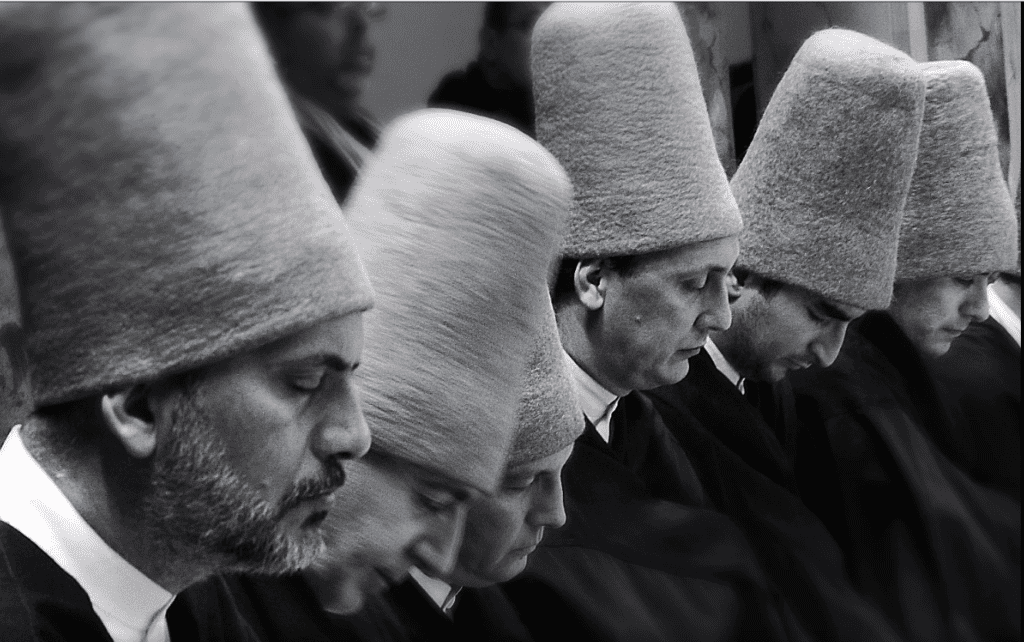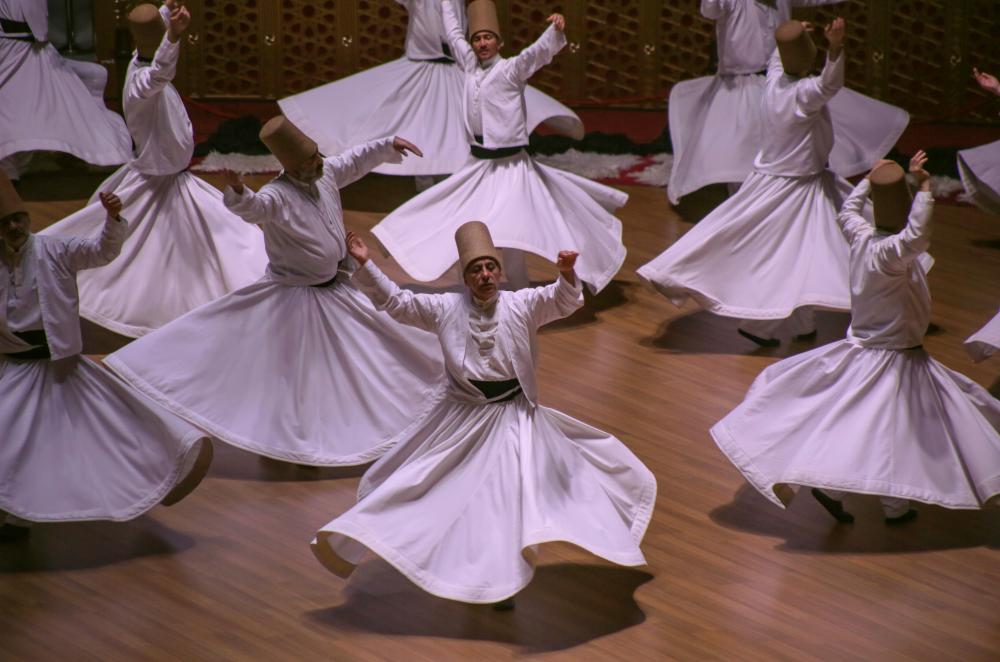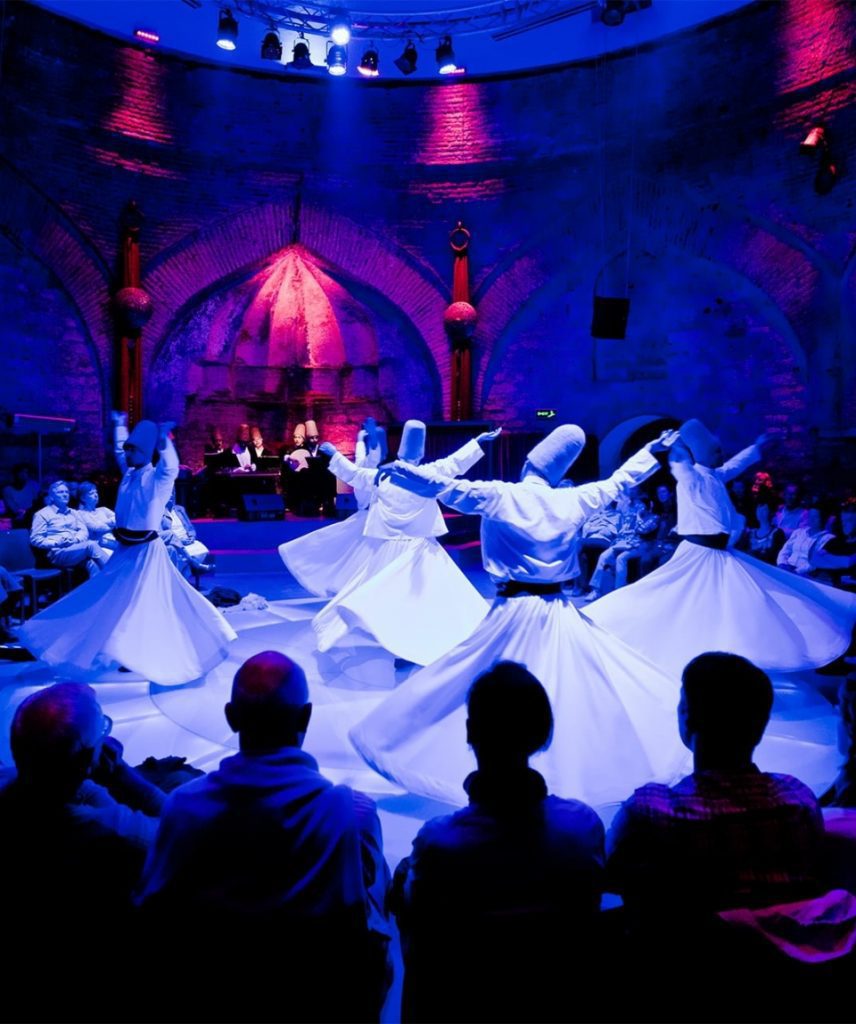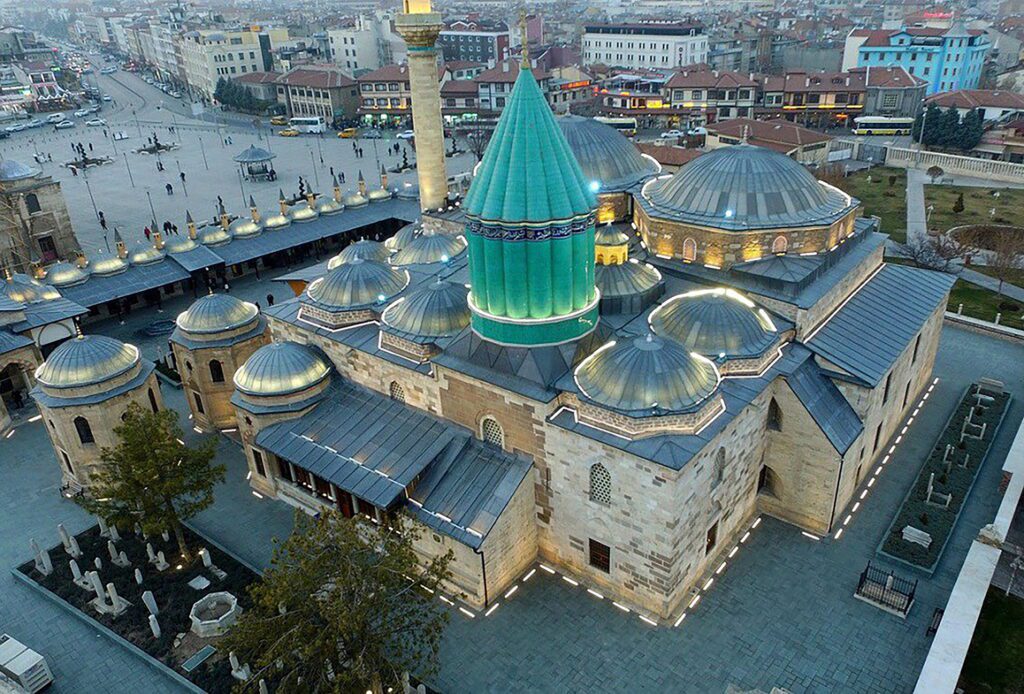Whirling Dervishes Ceremony
Introduction
Whirling Dervishes Ceremony : Everyone is familiar with the image of the whirling dervish, clad completely in white and spinning expertly as if in a trance. However, the dervish is much more than a visual spectacle, dating back over 700 years as part of Sufism and the Mevlevi Order. We take a look at the history of the dervish, their beliefs, and the significance of the whirling ritual. Of the numerous orders of Islam, Sufism is defined as the inner and mystical dimension. The Mevlevi Order was formed in 1312 in the Turkish city of Konya (formerly the capital of the Anatolian Seljuk Sultanate) by the followers of the 13th century Persian poet, Islamic theologian, and Sufi mystic Jalāl ad-Dīn Muhammad Rūmī (or Mevlânâ). Organized by Mevlânâ’s son, Sultan Walad, the order in Konya soon began to expand into other towns with appointed leaders, and in its heyday there were 114 tekke (monasteries) established throughout the Ottoman Empire, including ones in Belgrade, Athens, Cairo, Mecca, Baghdad, Damascus, and Tabriz.
“Come, come, whoever you are.
Wanderer, worshipper, lover of leaving.
It doesn’t matter.
Ours is not a caravan of despair.”
Whirling Dervishes Ceremony Video
With the fall of the Ottoman Empire after WWI, the Sufi organizations were declared illegal, and the tekkes were either closed down, adapted into mosques, or turned into museums. Two of the most important remaining Mevlevihane are the ones in Konya Mevlana Museum (where Mevlânâ is buried) and the Galata Mevlevihanesi in Istanbul. By 1953 public performances of the Mevlevi Sema, or the Whirling Prayer Ceremony, were permitted by the Turkish government, and soon large crowds came from all over the world to watch displays organized by the Ministry of Culture and Tourism.
Experience The Mystic Sufi Dance
Originally, the Semahane Ceremony was a weekly remembrance of God, a ritual practiced by each Mevlevi tekke community where everyone was present, including Mevlevi musicians, women, and non-resident dervishes who chanted the Mevlevi ‘zikr,’ or prayer, silently in their hearts. As for the symbolism of the Sema ritual itself, the semazen camel’s hair hat (called a sikke) represents a tombstone of the ego, while the white skirt (called a tenure) is the shroud of the ego. When the dervish takes off his black coak, he is meant to be spiritually reborn to the truth. At the beginning of the ceremony the dervish holds his arms crosswise to represent the number one, testifying God’s unity.
A secret turning in us makes the universe turn.
Head unaware of feet,
and feet of head.
Neither cares. They keep turning.
-Rumi
Rituals of Sema
The dervishes start the ceremony in dark cloaks, accompanied by the unique sounds of Sufi music. Then they remove the dark cloaks, which symbolizes – the start of their spiritual journey and submission to the truth. After removing the dark cloaks, their headdress (symbolizing the tombstone of ego) and the white skirts (symbolizing the shroud of the ego) are uncovered, meaning the journey has begun. At the beginning and at each step of the Sema ritual the Dervishes hold arms over their chest, testifying the unity to god. When the right arm turns upward to the sky and the left arm downwards to the earth – dervishes are receiving the spiritual gift from the god and bringing it to humanity.

The ritual ceremony consists of seven parts, each having its own meaning.
- Part One: The ceremony is started with a eulogy to God’s Prophet, and all the other Prophets before him. For dervishes, praising prophets is praising God, as God created them.
- Part Two : Part two continues with the eulogy, but now it’s accompanied with a special dervish drum (kudum), which symbolizes God’s order of Creation: “Be.”
- Part Three: Now, when the eulogies are finished, the third part is started with a sound of reed flute (ney). The instrument represents the Divine Breath, the breath, that gives life to everything.
- Part Four: Accompanied by music called “peshrev” and led by the master (Seyh), dervishes greet each other three times, repeating a circular walk (Devr-i-Veled). The greetings symbolize the salutation from one soul to another.
- Part Five: The Sema (whirling) is divided into four salutes (Selams). At the beginning, as well as the end of each salute – dervishes testify to the unity to God. In Buddhism this state is known as “Nirvana”, in Islam it’s known as “Fenafillah”. In this stage, dervishes are not trying to lose conscious thought and reach the “Fenafillah”. They end the salute with crossing their arms over their chest again, symbolizing unity with God – consciously and feeling. The forth salute is the completion of the dervish spiritual ceremony. They return back to their mission on earth, which is to serve God, his books and everything he has created. At this state, dervishes are full of joy and deepened faith in their mission. The first salute presents the human perception of God and his own self. The second salute is an expression of the amazement in the presence of God’s power and greatness. The third salute is the sacrifice of the mind to Love. This is a submissive state of sacrificing the mind and surrendering to love, as to become part of God – to reach Unity.
- Part Six : Now, when the Sema is over, it’s proceeded with a reading from the Quran, to salute the God and the dervish philosophy.
- Part Seven: The last part is ended with a prayer. The prayer is done for the release of the souls of all followers and prophets, with the intention: for them to find the truth and reach the unity with God.

While whirling
The dervish’s arms are open with his right hand directed to the sky, representing his readiness to receive God’s beneficence. The dervish’s left hand is turning toward the earth, representing his willingness to convey God’s spiritual gift to those witnessing the Sema. It is also believed that while revolving from right to left around his own heart, the dervish embraces all humanity with love, since Sufis believe that the human being was created with love in order to love. A quote by Rumi states that, ‘All loves are a bridge to Divine love. Yet, those who have not had a taste of it do not know.’ Known for the whirling dance of meditation, Dervishes are devoted followers of Islamic Sufism. The Dervishes make up an order of Sufism, one of the many branches of Islam.

The Sufi way of life is to love and serve other people, deserting personal desires in order to reach perfection and become closer to Allah. Followers of the Dervish order can be found throughout North Africa, Turkey, the Balkans, Iran, Pakistan, India, Afghanistan and Tajikistan. Supporters of Rumi, also known as Mawlana Jalel ad-Din Muhammad Balkhi or Mevlevi – the great mystic Persian poet born in 1207 – founded the Dervish order. Rumi was an ascetic who lived in seclusion and practiced abstinence, seldom eating, sleeping and talking, while he composed his works. His way of life became their inspiration. The formal practice of Sema, or whirling, is still practiced by the Turkish Mevlevi Dervishes and emerged as an active form of meditation.
For this ceremony, the Dervish wears a black cloak (symbolizing the grave), a tall brown hat (symbolizing the tombstone) and a white robe to symbolize death. The ritual of ‘whirling’ brings the Dervish into harmony with nature while they thank Allah, their Creator, and pray to him. Sema unites the three fundamental components of human nature: mind, heart and body. Following the highly active ceremony accompanied by music and poetry, the Dervishes meditate in silence. Although considered a tourist attraction in places like Istanbul and Damascus, the Dervish continue to practice their religion while Sema ceremonies, such as the ones in the Sudan with the red and green dressed dervish, are still very much part of the Turkish community.

Come, come, whoever you are, wanderer, worshiper, lover of leaving, it doesn’t matter.
Ours is not a caravan of despair.
Come, even if you have broken your vow a hundred times.
Come, come again, come.
Frequently Asked Questions about Whirling Dervishes Ceremony

- Why do whirling dervishes whirl? Because your body stopped your soul is whirling. Whirling dervishes whirl as their practice and usually with an intention. In the formal Sema, whirling dervishes perform the ritual each year on the anniversary of Rumi’s death. … As Rumi said, we turn to the center of the center of our own true selves.
- Are there female whirling dervishes? Traditionally, only men can dance as Whirling Dervishes, although that is beginning to change. In Istanbul, men and women can now take part in the dance together.
- How long do whirling dervishes spin? In 1921, an observer clocked a barefoot dervish at one whirl a second, nonstop, for 22 minutes—but today’s dervishes do not whirl, they turn. Still, the ceremony is visually and aurally stunning
- What is the most important belief in Sufism? Sufism is a mystical form of Islam, a school of practice that emphasizes the inward search for God and shuns materialism. It has produced some of the world’s most beloved literature, like the love poems of the 13th century Iranian jurist Rumi
- How Sufism is different from Islam? While it is sometimes misunderstood as a sect of Islam, it is actually a broader style of worship that transcends sects, directing followers’ attention inward. Sufi practice focuses on the renunciation of worldly things, purification of the soul and the mystical contemplation of God’s nature
- Why do Sufis wear white? While most sources agree that the khirqah was a patched piece of cloth, there is no uniform description of the colour or shape. Some described it as a blue woolen robe, and, since blue is the color of mourning, it signified the rejection of worldly pleasure. Others described it as white for purity.Whirling Dervishes Ceremony
- What religion are whirling dervishes? Sufi Whirling Dervishes. Sufism, the mystical branch of Islam, emphasizes universal love, peace, acceptance of various spiritual paths and a mystical union with the divine. It is associated with the dancing of whirling dervishes, who originated in the 13th century as followers of the poet and Muslim mystic, Rumi
- Who started Sufism? Baha-ud-Din Naqshband (1318-1389) of Turkestan founded Naqshbandi order of Sufism. Khwaja Razi-ud-Din Muhammad Baqi Billah whose tomb is in Delhi, introduced the Naqshbandi order in India.
- How do you become a whirling dervish? To become a Dervish, one must take a vow of poverty and live in monastic conditions, similar to Christian monks. For these Dervishes, spinning is their way of worshipping God
- Which language did Rumi write in? Rumi’s works are written mostly in Persian, but occasionally he also used Turkish, Arabic, and Greek in his verse. His Masnavi (Mathnawi), composed in Konya, is considered one of the greatest poems of the Persian language.










